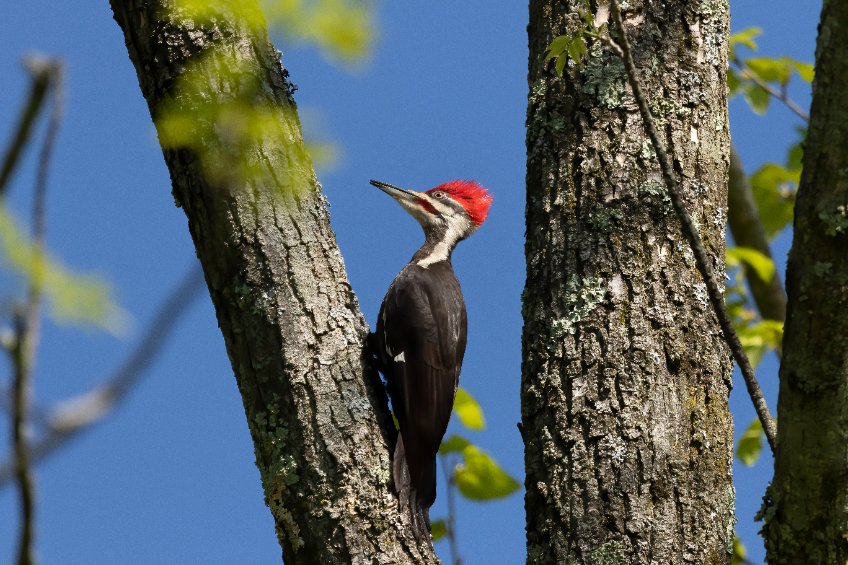By John Salak –
Step outside the realm of cartoons and think about exactly what a woodpecker is doing. Yes, they are pecking wood but at an astonishing rate of up to 20 knocks on their beaks and consequently noggins every second. That’s got to leave a mark, right?
Well, not really. In fact, woodpeckers are largely unfazed by smacking their heads into trees at rapid-fire paces over extended periods. But they’re staying power is not what scientists have long-suspected, at least according to a lot of pecker-obsessed researchers from the University of Antwerp in Belgium.
Scientists have long believed that the skulls of woodpeckers served as something akin to shock-absorbing helmets to prevent these birds from virtually losing their minds. Apparently, they were wrong. Woodpecker skulls are more like “stiff hammers” the Belgian researchers discovered. In fact, a shock-absorbing skull would wind up hindering their ability to peck away.
Even with this revelation, most would believe all that knocking can’t be good for the pecker’s brain. That would certainly be the case if a monkey or person were smacking their head against a tree 20 times a second, but the woodpecker is able to get away unharmed because, well, they’ve got a bird brain. In effect, the woodpecker’s brain is so small, that the bird can peck away at a tree and not suffer a concussion, according to Sam Van Wassenbergh of the Belgian University.
“By analyzing high-speed videos of three species of woodpeckers, we found that woodpeckers do not absorb the shock of the impact with the tree,” Van Wassenbergh explained. “The absence of shock absorption does not mean their brains are in danger during the seemingly violent impacts. Even the strongest shocks from the over 100 pecks that were analyzed should still be safe for the woodpeckers’ brains as our calculations showed brain loadings that are lower than that of humans suffering a concussion.”
The university’s findings probably also explain why woodpeckers haven’t evolved larger heads and neck muscles. Yes, these physical characteristics would allow them to peck more wood, but it would also create lots of potential problems for these birds.
Van Wassenbergh’s work may ultimately have far-reaching consequences that transcend the world of woodpeckers.
“This myth of shock absorption in woodpeckers is now busted by our findings,” he proclaimed. With its demise, engineers now may have to rethink the development of shock-absorbing materials and helmets and not use the woodpecker’s noggin for inspiration. Leveraging anatomy to provide cranial protection may play a larger role for humans going forward.
The other burning question is why these birds rap their beaks against trees. There are multiple reasons, according to the nonprofit Forest Wildlife. Woodpeckers peck to find food, mark their territories, attract mates, build nests and ward-off predators.












